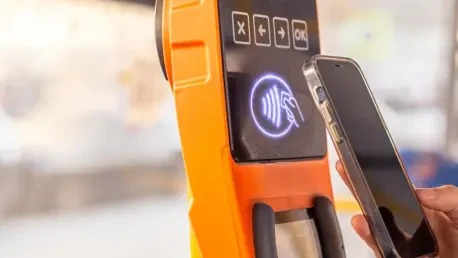Greater Manchester’s public transport landscape has been reinvigorated with the introduction of Tap & Go, a contactless payment system that promises to revolutionize how residents navigate the city. Since the system’s launch, over 2.1 million bus journeys have been recorded within its first month, underscoring the public’s readiness to embrace a more streamlined travel experience. On its busiest day, April 3rd, the system facilitated 99,000 journeys, indicating a growing demand for efficient transport solutions. The essence of Tap & Go lies in its simplicity—by automatically calculating fares within a unified fare structure, it minimizes the hassle traditionally associated with public transport. Passengers no longer need to worry about planning their routes or buying tickets in advance, a shift that is expected to drive more people away from car usage in favor of buses and trams.
Towards an Integrated Transport System
The Tap & Go initiative in Greater Manchester marks a strategic move toward developing a London-style integrated transport network, a vision championed by authorities. Fueled by this ambition, city officials, including Mayor Andy Burnham and Fran Wilkinson from Transport for Greater Manchester, have ardently supported the system. Both have highlighted its potential to enhance accessibility and affordability, concepts crucial to nurturing a robust public transport network. The program’s success is crucial at a time when urban areas seek to reduce carbon footprints and encourage sustainable travel. The integrated system, which now includes buses and trams, aims to further encompass local train services by the end of the decade. This integration underscores a broader shift toward seamless and user-friendly transport modes, aligning with environmental goals and urban growth strategies. The success of such systems could be pivotal in reshaping commuter habits and enhancing urban mobility on a wider scale.
Prospective Developments and Urban Mobility
The introduction of Tap & Go in Greater Manchester is setting a new standard for convenience in public transportation. This development promises not only enhanced mobility but also progressive shifts in urban planning and lifestyle preferences, as effortless transit becomes a norm rather than a luxury. With future goals poised to include local rail services, attention is now on reinforcing the infrastructure vital for such advancements. This initiative could very well serve as an inspiration for other cities seeking comprehensive transit solutions tailored to the varied needs of urban populations. The widespread embrace of technologies like Tap & Go reflects the burgeoning demand for both efficiency and sustainability in modern transport systems. It also signals a shift in how we envision urban mobility. As Tap & Go continues to grow and succeed, it is set to establish a crucial precedent, potentially becoming a blueprint for metropolitan areas worldwide that aim to achieve transformative advancements in their own transportation networks.









